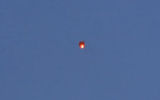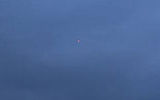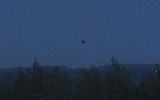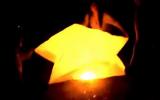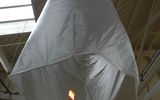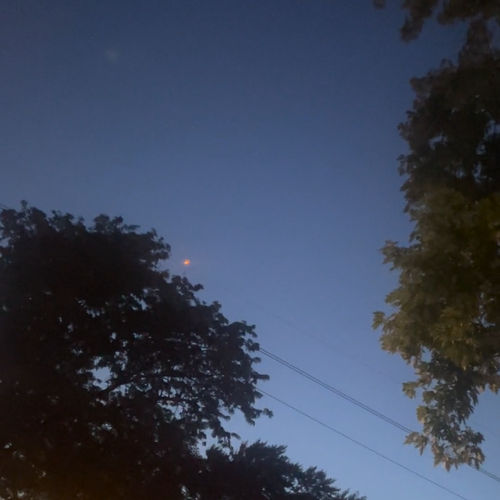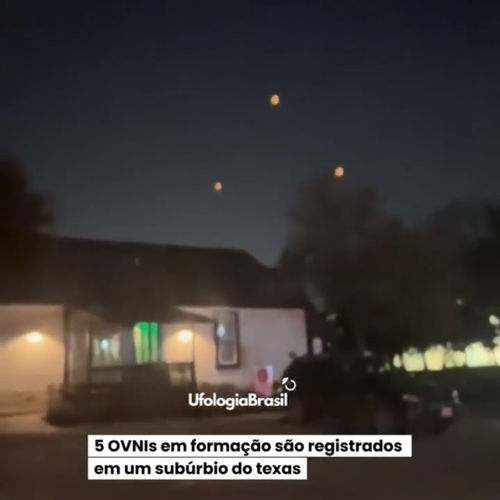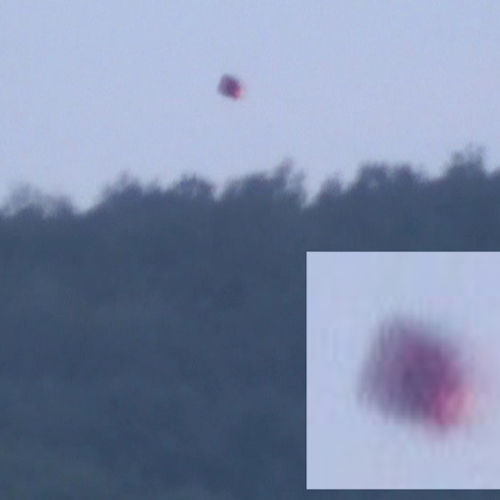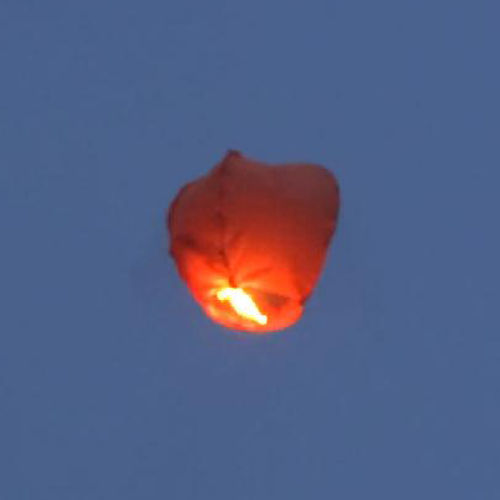
| Added | Mon, 10/10/2016 |
| Sources | |
| Феномены | |
| Version type |
Sky Lantern (Chinese flashlight, Thai flashlight) - paper flying luminous structure made of rice paper stretched on a light wooden frame, bamboo ring, burner.
According to the principle of operation, it is similar to a thermal balloon (montgolfier): The flame of the burner heats the air inside the flashlight to 100-120°C. When heated, the density of air becomes less, and accordingly, with a limited volume, its mass. The air inside the flashlight becomes lighter than the air outside, so the flashlight floats in the cold air.
The first mention of Chinese paper lanterns was found in the annals describing the military campaigns of the general Zhuge Liang (180-234 AD), who, according to sources, used them to instill fear in enemy troops:
The oil lamp was installed under a large paper bag that rose with hot air from the lamp. ... The enemies were overcome with fear because of the light in the air, thinking that the divine power was helping him.
However, the device, which is a lamp in a paper container, was previously registered, and, according to According to Joseph Needham, hot air balloons in China were known in the third century BC.
It is also known that flying Chinese lanterns were used as a universal means of transmitting signals between the command and various army units in the Chinese army. Later, in China and other Eastern countries, the launch of paper lanterns was given a certain religious significance. In Europe, Chinese lanterns began to appear en masse since 2005, but some were launched earlier.
Among all UFO sightings, nighttime sightings can be considered separately. Due to the peculiarity of perception, glowing objects are most often noticed in the dark. If we consider the data for 2008-2012, the distribution of objects of night observations will look like this:

The diagram clearly shows us that a fairly large percentage of erroneous observations fall on the "Sky lanterns".
The duration of the experiment is 1.5 hours
Date of the main experiment 04.09.2012
Location of the experiment Voronezh Region
Weather conditions on the day of the experiment: Cloudy, air temperature +16C, 747 mm Hg, wind west 2m / s, humidity 77%.
Purpose of the experiment: Consider in detail the "Sky lanterns" as an object mistaken for a UFO, and show possible eyewitnesses the features of their observation.
Sky Lantern (Chinese flashlight) - paper flying luminous design made of rice paper, bamboo ring, burner.
According to the principle of operation, it is similar to a thermal balloon (montgolfier): The flame of the burner heats the air inside the flashlight to 100-120°C. When heated, the density of air becomes less, and accordingly, with a limited volume, its mass. The air inside the flashlight becomes lighter than the air outside, so the flashlight floats in the cold air.
The role of the supporting structure in the sky lantern is performed by a light wooden frame, usually bamboo. In the lower part of it there is a burner fixed on a thin wire. A traditional burner is made from a piece of cotton cloth soaked in wax, or from porous paper soaked in flammable liquids. In modern flashlights, the burner is sometimes made of combustible polymers. The dome is made of rice paper with the addition of mulberry wood. Paper, as a rule, is impregnated with a special non-flammable composition so that it does not catch fire.
The weight of the average sky lantern is 50-100 g. Lift height is usually in the range of 200-500 meters, the combustion of the fuel in the burner 15-20 minutes. The average height of the flashlight is 1 meter.
Industrially manufactured flashlights are divided into small, medium and large. In the general version (without considering each form separately) they look something like this:

The size of a small, medium and large air flashlight.
However, some make flashlights at home, for example, from garbage bags. These flashlights can be completely arbitrary sizes and shapes.
The shapes of lanterns are very diverse: pyramid, cylinder, heart, cone, star, diamond, etc.
The color scheme is also quite extensive, ranging from solid colors to complex patterns. Main colors: white, green, red, blue, purple, pink, orange.
Experiment
We decided to take an orange flashlight, as the most common in the video with an imaginary UFO.
First of all, we observed all the precautions described on the package when launching flashlights: we chose the evening after the rain, the appropriate weather conditions – high humidity, drove to a safe distance in a plowed field and started launching.



Photos before you start
Due to the wet ground and grass, we were unable to press it to the ground before launching, as indicated in the instructions, so we had to hold it in our hands until it took off.
Below, we will also give some examples of observing a sky lantern at different altitudes and different distances from the observer.
The above photos clearly show that, flying at a distance of up to 15 meters from the observer, an air flashlight can easily be recognized even by a person who has never seen it and, even if not identified, but definitely not written off as a UFO. With a distance of about 50 meters – it is somewhat more difficult: here the flashlight turns into a flickering speck with clear outlines for the observer and the UFO is taken only at first casual glance and only with direct observation, in the photo and video it is possible to zoom in and accurately identify the object. At a distance of more than 200 meters from the observer, the object may well be mistaken for a UFO, both in the photo and in the video: it looks like a small spot that sometimes flickers and moves in the wind.
Separately, I want to pay attention to the air flashlight, which is extinguished and falls to the ground. In the photo, at a sufficient distance, it is quite possible to take it for a UFO. And when taking a series of pictures or shooting a video-even for landing a UFO, especially if it lands behind distant objects.

Photo after landing
We followed the path of the sky lantern until the torch went out and the flashlight landed on the field. We found it, made sure that it was completely extinguished and did not cause damage, then took it with us to throw it in the trash on the way. After that, it was possible to consider the experiment over, its total time, together with the preparation for launch, was 1.5 hours.
We also shot a video of a sky lantern flying.
We have not subjected it to any processing in order to bring it as close as possible to amateur filming of objects taken for UFOs. The recording clearly shows the moments when the flashlight reaches such a distance from the observer that it becomes difficult for the naked eye to distinguish anything other than a glowing (and then dark) point.
Conclusions
Most often there are testimonies that record " Sky lanterns»:
- on Fridays and Saturdays (wedding days) - 1-5 objects;
- public holidays and mass celebrations (flash mobs) – more than 20 objects;
- single launches can be observed on any day.
The speed of the flashlight depends on the wind speed (the wind speed at the height of the flashlight flight is only 2-4 m/s higher than the ground wind speed) [2].
You can distinguish a flashlight from other objects by its characteristic features:
- flickering of the fire, depending on wind gusts (up to short-term attenuation);
- direction of movement-downwind;
- "jerky" nature of movement in a gusty wind;
- a short time of "life" (no more than 20 minutes), ending with fading.
Related facts
Related news
Related articles
Log in or register to post comments

